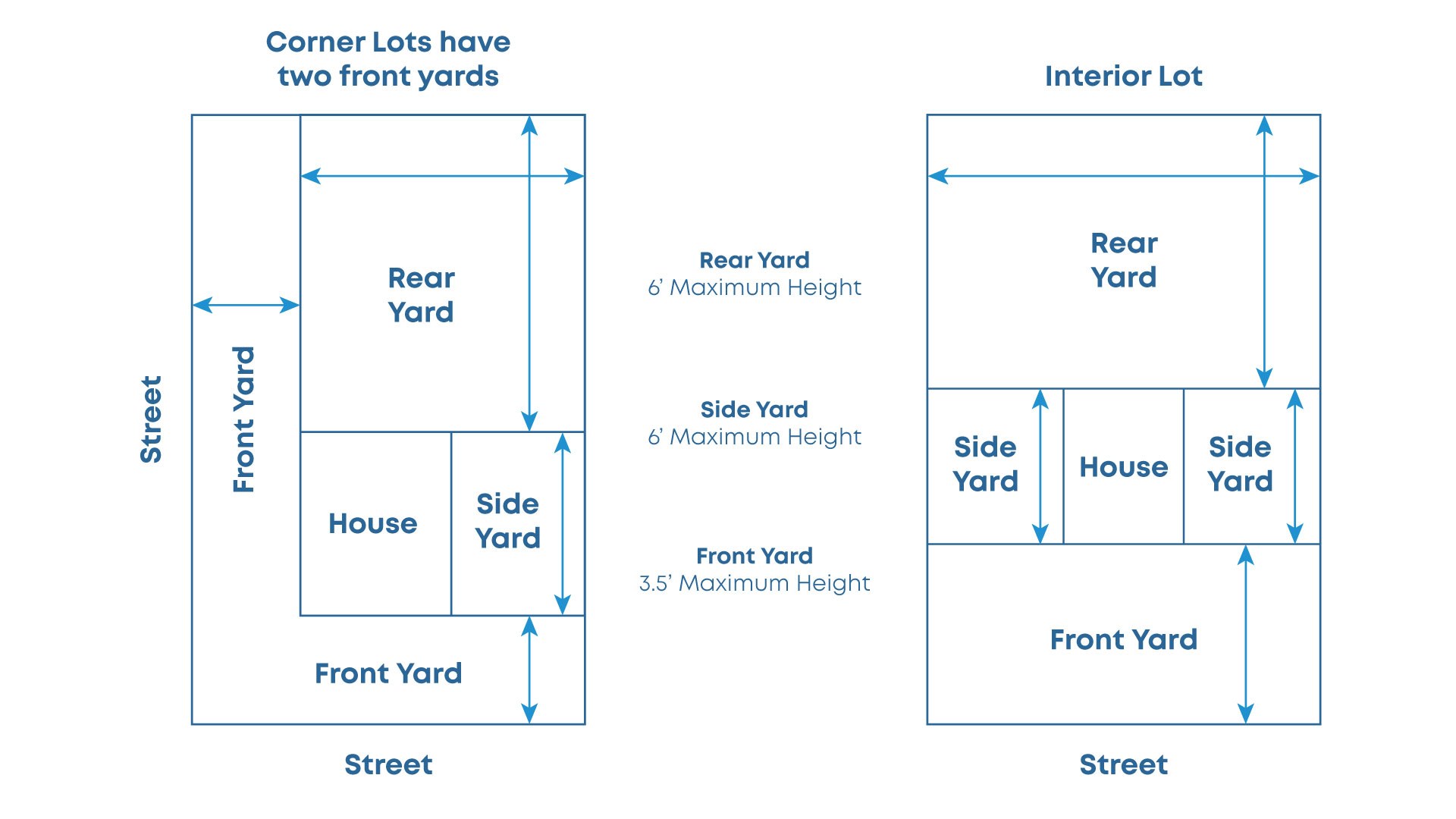Fencing and hedging are permitted along all property lines in residential zones.
When do I need a permit?
- All fences require certificate of zoning compliance.
- Fencing repairs can be made without a permit/certificate if the area being replaced is 100 square feet or less and will match the existing fencing material.
Relevant Building Codes
General Requirements
- Locate and ensure accuracy of property lines, if uncertain, contact a professional surveyor
- Check for any deed restrictions or easements
- Notify neighbors as a courtesy
- Materials not specifically manufactured for fencing can't be used for a fence within residential zoning district
- Used or discarded materials, including but not limited to pallets, doors, tires, corrugated metal, tree trunks, or other similar items can't be used for a fence
- Fence posts must be structurally stable. Wood fence posts must be treated lumber
- The finished side of the fence must face the adjacent property, street, or place
- Fencing does not have a setback requirement and may be installed on the property line at the appropriate height
Maximum Fence Heights
- Front yard: 3.5 feet
- Side yard: 6 feet
- Rear yard: 6 feet
- Note that corner lots have two front yards. The rear yard on a corner lot is the one opposite the side of the house with the parcel address.

Note: A permit is required for commercial fences over 7 feet tall.